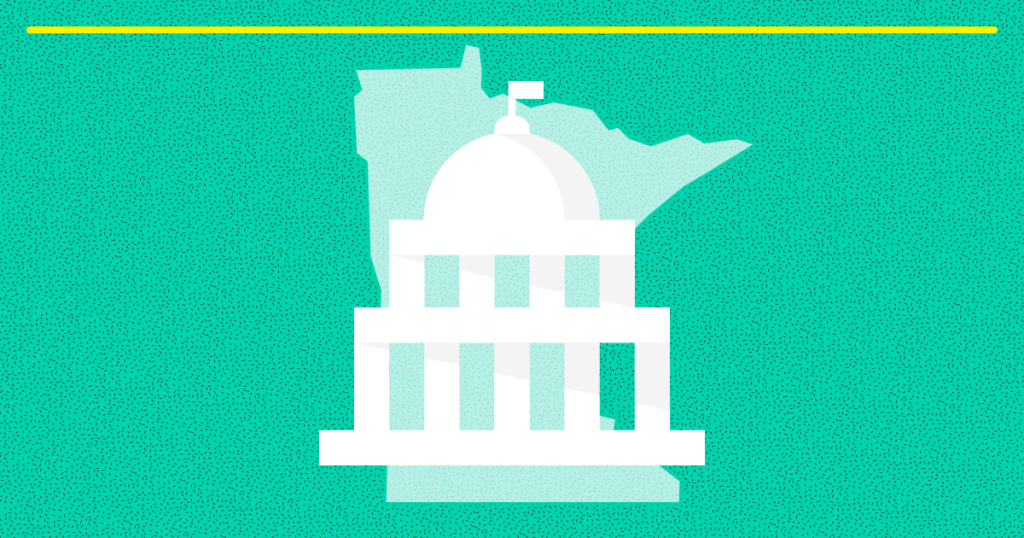This post is the thirteenth post in a year-long blog series on teacher retention.
Data on why teachers leave show the primary reasons trace back to school-level working conditions, in particular, whether teachers feel honored, supported, and have meaningful influence in school decision-making.
Prior posts in this series have explored research on creating the school conditions where teachers thrive, and have profiled the work of leaders creating culturally affirming schools with positive cultures. We’ve also looked at what school districts are doing to assist these efforts.
But for those working at the state level, the question remains: what can we do to help? To answer this question, we did a landscape scan across the websites of state departments of education, state boards, and state legislatures, and reviewed published materials on this topic.
In short, we found that state efforts fall into three main buckets: improving initial teacher preparation, supporting teachers’ onboarding and development, and expanding opportunities for teacher professionalism and leadership. Let’s explore these three buckets, below.
1. Improving initial teacher preparation
The way teachers are prepared influences whether they will stay. Strong training in pedagogy and practice sets teachers up to succeed; in particular, programs that help teachers master a set of “core practices” are often more effective than those dominated by content and theory. Relatedly, there is strong evidence that preparation programs involving a heavy practical or clinical component, in particular teacher residencies, yield teachers that are more likely to stay.
State policymakers can help clear barriers and encourage shifts in teacher preparation to be more practice-oriented and clinical. States—including Minnesota with its new standards for teachers and standards for preparation providers, both of which are currently in active rulemaking—are taking steps in this direction. But in doing so, policymakers need to courageously question long-held assumptions in areas such as: who is qualified to be a teacher educator; whether practical skills are more important to focus on than theoretical knowledge; how school partnerships and field experiences can be more fundamentally integrated into preparation programs; and more.
Finally, states can help push for shifts in teacher preparation through grantmaking. Minnesota’s current Grow Your Own grant program, which funds practice-heavy residency programs, is an important example of this, and should be continued.
2. Supporting teachers’ onboarding and development early on
Teachers are more likely to stay if they receive strong orientation, onboarding, mentoring, and other forms of support early in their career. States have adopted a range of policies including district requirements around providing early support to teachers, regulations around who can mentor new teacher mentors and how, and funding for onboarding and mentorship programs. (For an exhaustive review, see New Teacher Center’s report on this topic.)
As an example of Minnesota state policy in this area, in 2019 the legislature created a $750,000 grant program to mentor and retain teachers. The application—which was open to schools, districts, and coalitions wanting to create pilot programs—just closed and winners will be announced in early 2020.
Too often, though, teachers report that supports and development opportunities aren’t aligned with their needs. “I’d like to see more support for professional development around what teachers are asking for,” said Yelena Bailey, policy director for the Minnesota Professional Educator Licensing and Standards Board. “How can teachers get the PD that will serve them where they are and want to be?”
Overall, while supporting teachers through onboarding and mentorship is important, in comparative analyses more fundamental problems with schools as workplaces—around leadership, culture, and lack of teacher influence and autonomy—can negate even the best of early support programs. As Bailey says, “You can get people there but if the conditions in schools and the profession aren’t changing, they’re not going to stay.”
In the following, final section we explore how the state can help change these fundamental conditions.
3. Honoring teachers as professionals and leaders
To begin with, states can honor teachers as professionals by ensuring there are clear and accessible routes for teachers to enter and advance within their professional licensure systems. A 50-state analysis shows most states have such systems, and Minnesota’s new tiered licensure system is a good step in this direction. Some states have gone further to create special “teacher leader” license fields, adopt “teacher leader model standards”, and more.
While improvements to state licensure systems are helpful, states need to go further and ask how they can truly elevate teacher professional respect and authority. As Bailey says, “We need to center teacher voices and bring them more into decision-making. We hear that when administrators make decisions and your voice isn’t heard, that impacts your environment. How can we create [teacher leadership opportunities] in a more structured way?”
One example of how to do that are laws in several states (including NC, KY, MA, CO, TN, OR, and others) that specifically define school “site councils” or “leadership teams” and give teachers seats on those bodies and/or defined roles in school decisions.
Similarly, state laws that provide for autonomy and decision-making at the school level are requisite to expanding teachers’ voice and professional authority. Examples include Minnesota’s site-governed schools law within the district sector, and Minnesota’s charter school law, which since its inception has had as a core purpose to “create new professional opportunities for teachers, including the opportunity to be responsible for the learning program at the school site.”
Finally, the state could use grantmaking as a tool to encourage larger teacher professional roles, for example building on the 2016 teacher-governed school grant program, for which Education Evolving played a lead advocacy role, in partnership with a coalition of union leaders and legislators.
Ultimately, though, to elevate the professional respect and authority of teachers, the best strategies might be more for state leadership than for state policy. Data show the majority of teachers are eager and willing to step into larger, formal collective leadership roles in their schools, including in teacher-powered schools—and that their expanded leadership also improves student outcomes.
What’s needed is state leaders—governors, commissioners, legislative committee chairs, and others—who are willing to use their voice and influence to expand awareness and reinforce the legitimacy of these educators’ efforts.
In short, state leaders should see “retaining teachers” as more than just a program or policy intervention to install, but rather a partnership to undertake. A partnership that supports teachers in the driver’s seat—teachers using their collective professional autonomy to create school environments that honor their colleagues, and help them to stay and thrive.
Found this useful? Sign up to receive Education Evolving blog posts by email.
We are grateful to the McKnight Foundation for their generous financial support for this series.


